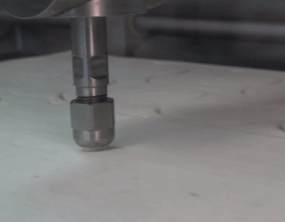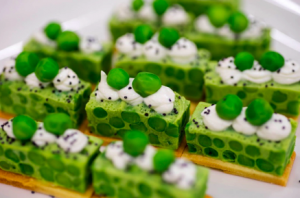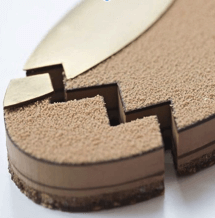Indeed, the last many years have witnessed a remarkable upsurge in small, compact water jet cutting machines and well suited for small and middle labs of the catering trade. After a brief presentation of the technology and its advantages versus the other cutting solutions, this paper reports the state of the art corresponding to the last realizations. Far away from the first applications in the food industry, more than 25 years ago, the water jet cutting technology has advanced especially for the last five years with the arrival of compact machines very easy to clean and to operate.
The water jet cutting principle

The water jet cutting technology, born in the seventies, is used in many fields of the industry to cut a big variety of materials, such as soft materials able to be cut by pure water or hard materials requiring water charged with abrasives. In the food sector, only the pure water jet cutting process is used to cut fresh food and frozen as well. In both cases, the cutting is achieved by a very powerful water jet movable above the product to cut.
– The cutting capacity is obtained by throwing water at a very high velocity (2 to 3 times the sound velocity). This speed setting is achieved by pushing a water flow through a small diameter nozzle (a few tenths of millimeters). Exiting the nozzle as a thin and coherent jet, the particles of water thrown at a high velocity, hurt the surface of the material providing a sharp edges cut.
– The cutting paths are obtained thanks to a system of coordinated axes numerically drive.
The different types of food commonly cut

The water jet cutting technology can cut a wide variety of products (pastries like opera or mille feuilles, with fruits, buches, nougatine, ganache, chocolate bar, dough before cooking, sugar dough, nougat, catering products like bread based canapés, salted tarts …
These products are mostly prepared in rectangular plates with dimension of 600mm X 400mm very common in Europe or a little smaller and in thickness up to 60 – 80 mm. These products may be fresh or frozen, the freezing, providing a consistency more homogeneous, is necessary in the case of pastry containing hard fruits like pistachios or nuts for example.
The advantages versus the other technologies

The classical cut by knife or cookie-cutter, still widely used in the very small labs, finds its limits when you look for precision or imagination with non-straight cuts. Likewise, the automatized ultrasonic cutters providing improvements in terms of precision and productivity are still limited to straight cuts and are not convenient for all foods textures. Versus blades based technologies, the water jet cutting provides a lot of advantages :
– High precision and flexibility in the programing of complex shapes without any dies.
– Compatibility with most of the recipes or textures, especially with preparations containing ham slices or hard particles like pistachios impossible to cut with ultrasonic methods or some praline-chocolates difficult to cut with guitar.
– Without any risk of broken blades neither bacteriologic contamination (the water under high pressure is almost sterile).
The important points in the choice of a compact water jet cutting machine
Existing for more than thirty years, the technology has been improved a lot over the last years, especially in terms of compactness, quality and ergonomics. The first compact machines dedicated to the catering trade were born approximately 5 years ago approximately, integrating the high pressure pump, these machine have generally only one cutting head with manual loading and unloading of the products by using removable cutting supports and a quit small foot print (1,5 m x 1,5m for example) allowing them to be installed in small and middle labs. To avoid any risk of humidity or splashing from underneath, the cutting support is made of blades placed edgeways and sharp on the upper edge in order to minimize the jet impact. Moreover, to avoid any fogging in the cutting area, the jet is generally collected in a narrow box possibly equipped with a sucking device. In terms of ergonomics, the last machines have been improved on several points :
– Ability to create simple programs directly on the machine itself.
– Off line programing methods adapted to the catering trade, able to design your own shapes by very simple way or by picture vectorizing with losses optimizations.
– Low sound level allowing an installation in the middle of labs without any trouble for the staff.
– Helps to load and unload the products thanks to a device promoting the sliding of the products above the cutting support without any risk of injuries by the supporting blades.
– Ease to clean due to a cutting area free of any retention and without any difficulties to access everywhere.
HYDROPROCESS, French leader in the water jet cutting processes for food, offers with ChefCut the best performing compact machine available in the marketplace.


